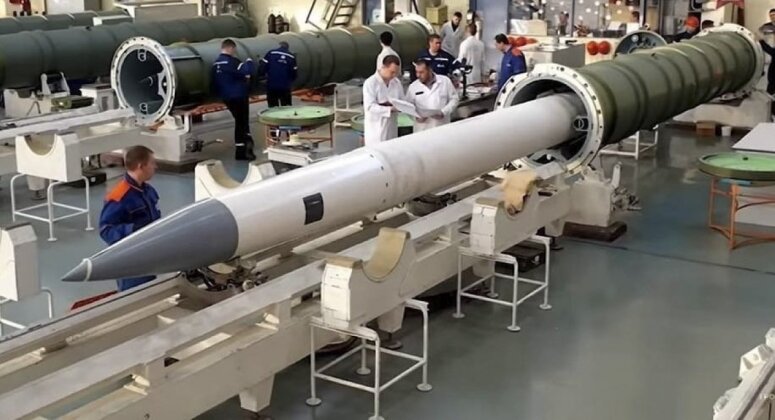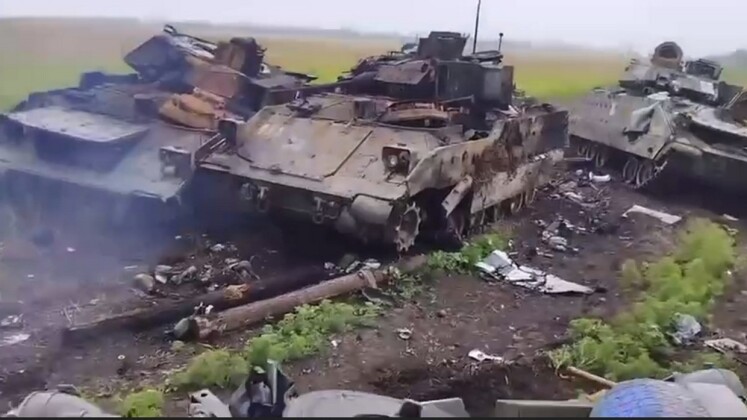News
Why the U.S. Refused to Send A-10 Attack Jets to Ukraine: Low Survivability Against Russian Air Defences Threatened Defence Sector’s Reputation
Following the escalation of Russian-Ukrainian hostilities into a full scale war from February 2022 it was widely speculated that the United States could seek to supply A-10 Warthog ground attack jets to the Ukrainian Armed Forces as part of a surge in arms supplies to the country. Although the class was at the time 45 years old having entered service in 1977, it remained the Western world’s premier aircraft for provision of close air support and was designed during the Cold War specifically with operations against Soviet armoured formations in mind. Speculation of possible deliveries was fuelled not only by the fact that the U.S. Air Force has continued to retire growing numbers of modernised A-10s, which still have many years of service remaining, but also by the aircraft’s optimal capabilities for the Ukrainian theatre. The A-10’s operational costs and maintenance needs are by far the lowest of any American manned combat jet, and much like Soviet aircraft, although unlike fighters such as the F-16, it is well optimised for operations near the frontlines from short or makeshift airfields.

A primary initial obstacle to supplying the A-10 to Ukraine was that its primary weapon the GAU-8 seven-barrel rotary cannon relied on depleted uranium rounds to penetrate modern armour, although with Britain from early 2023 supplying these controversial munition types followed closely by the United States this obstacle was removed. New insight into the rationale for withholding A-10s was provided by the London-based newspaper The Telegraph, which highlighted that Washington was averse to the repetitional damage its defence and aerospace sectors would suffer should A-10s be seen taking heavy losses in Ukraine. The decision not to supply the attack jets was based on “the extreme danger they would face – and the worrying prospect of dozens of American-made planes falling to the ground in flames without having done anything to help Ukraine’s war effort.” It highlighted the density of Russian ground based air defences across the frontlines, which caused immense losses for Ukrainian air units. From late 2022 Western sources highlighted that the threat to Ukrainian aircraft had grown significantly further due to the deployment of MiG-31BM interceptors armed with the world’s longest ranged operational air to air missile class, the R-37M, to bases near Ukraine to contribute to operations.

The A-10’s survivability in Ukraine is particularly questionable when considering the aircraft’s combat record in 1991 during the Gulf War, when Iraqi short ranged air defences left 20 aircraft damaged or destroyed forcing a temporary suspension of operations in the theatre. This was achieved despite Iraqi air defences being far from outstanding and the country’s armed forces being largely in a state of disarray. The United States has notably sought to avoid repetitional damage to its military assets by carefully controlling how they are deployed, and with German Leopard 2 and British Challenger 2 tanks having taken heavy losses in Ukraine American M1 Abrams tanks were not only delivered much later, but have been held back far from the frontlines. The American Bradley Fighting Vehicles which were deployed on the frontlines suffered extreme losses with over 70 estimated to have been destroyed or captured, although these older and lower profile assets are much less important to the image of the American defence sector. The expectation of heavy losses is also thought to be a primary reason why the U.S. was far more reluctant than its European allies to allow exports of F-16 fighters to Ukraine, with the obsolete Cold War era variants being sent similarly expected to deploy far from the frontlines and potentially to arrive only after a ceasefire deal has been reached near the end of the year. U.S. officials have also consistently downplayed the confirmed Russian strikes on Patriot air defence systems in Ukraine, which are by far the most high profile and costly weapons systems which have been delivered to the country.

Russian air defences have continued to set new records for the ranges at which they have been able to achieve kills, with the S-400 system making its first confirmed use of the 40N6 surface to air missile in early November – a unique asset developed specifically to be able to engage targets beyond the range of ground based systems’ radar coverage. The system does so using targeting data from aircraft, allowing it to strike targets up to 400km away even at very low altitudes. Russia’s longest ranged anti aircraft missiles deployed by the S-500 system have notably not been used in the Ukrainian theatre. Although Russian fighter aircraft have seen their standing compared to their top Western and Chinese counterparts decline significantly since the end of the Cold War, the country’s ground based air defence systems have received several times more investment and remain world leading. The Ukrainian Air Force has been able to sustain operations due to a tremendous inflow of new combat aircraft from across the Western world, including dozens of MiG-29 fighters which were previously exported to the Warsaw Pact states by the Soviet Union in the 1980s and early 1990s.












